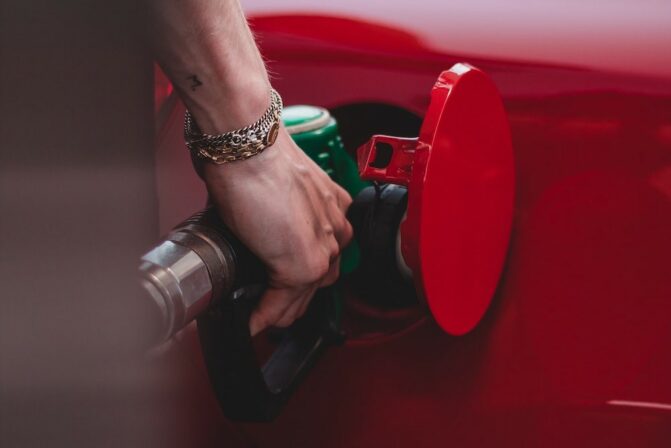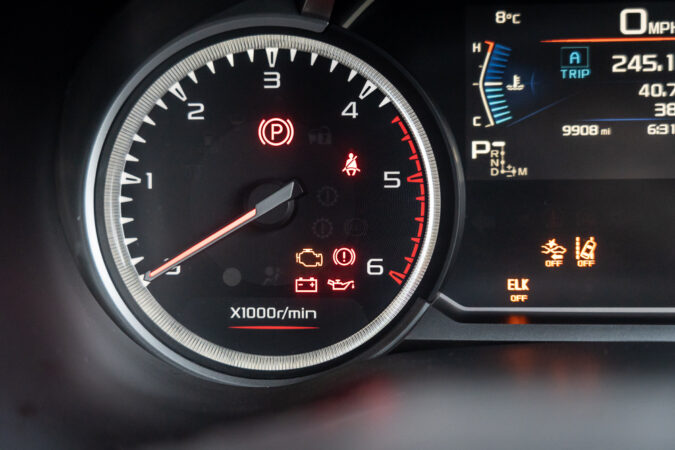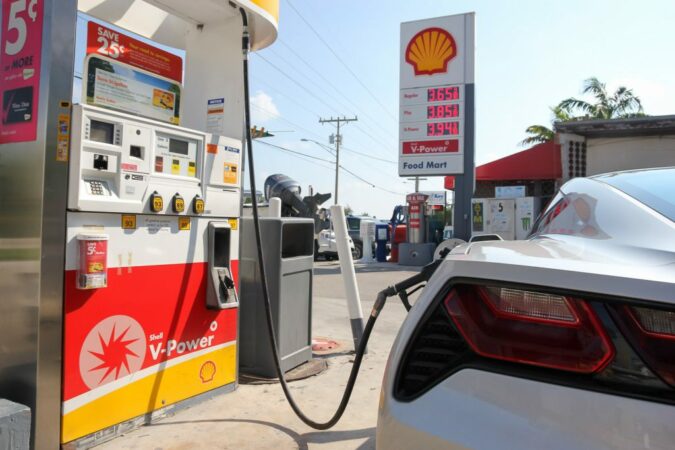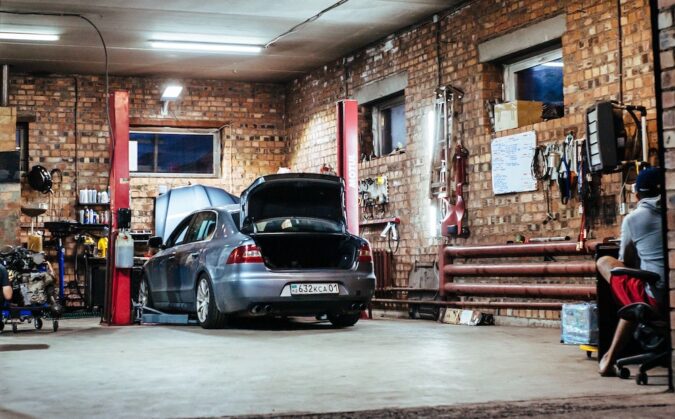Have you noticed the check engine light on your cluster and you diagnosed the code P0457? Well, if that is the case, and you are in this situation, then you are at the right place because there will be a lot to cover on this topic.
Having a problem like this can be really frustrating to deal with because even though it is straightforward, it’s not like that when it comes to solving it.
A lot of people will say, hey I will just change the gas cap and I will be good. But this isn’t the case, because the causes of this problem can be more than a few. Even if you change this cap, the problem might still persist and cause you further trouble. And in order how to understand the issue you need to understand first how the EVAP system works on your vehicle. And that’s what we are going to focus on in this article.
First, we will cover the basics of car diagnostics and we will learn the basic tools and procedures that you need to know when you diagnose a check engine light. Then we will cover the P0457 problem and after this understand how this EVAP system works in practice.
Later on, we will cover the causes as well as the symptoms of the P0457 code. Then we will learn how to diagnose and fix this problem on your car. So, if you want to learn more, follow along.
P0457 Code
Now before we dive into more complex topics and start understanding the code P0457, let’s first cover some of the basics when it comes to car diagnostics.
I bet that there are a ton of people that are reading this and are not quite familiar when it comes to car diagnostics and how it is performed the right way. So, this chapter is for them. If you feel like you know this stuff, you can jump to the problem. If not, keep up with us for a bit.
Nevertheless, modern cars are very complex and they implement a ton of electronics and complexity. It’s not like back in the day when the only thing that you could do is a small tune-up (to learn more, check out our guide on what is a tune-up and what does a tune-up consist of) and adjust the carburetor.
Modern cars are packed with sensors and systems that communicate with the computer. Which is also known as PCM or ECM. This computer gets the reading from each of these sensors and when it notices that something is not working as it should, it will throw the check engine light.
This light is something that no owner wants to see on their cluster. Mainly because you don’t know what it means. It could be million different things. That’s why you need to have a tool which is the OBD2 scanner.
What you do is that you plug this tool into the OBD2 port of your car and you let the tool scan for problems. Then you will get all the different codes that your car makes.
Based on these codes, you can move on to jumping to conclusions. Let’s say that you got the P0457 code. What this code means and what is its definition? Let’s elaborate more on this in the next chapter.
EVAP Emission Control System Leak
Now as we covered the basics of car diagnostics and how it is done, we can move on to different topics. Namely the P0457 code and its meaning. What does this code mean in the first place?
Well, this code indicates an EVAP emission control system leak. Overall, that is all that you need to know when it comes to it. It basically tells you that you have a leak in your EVAP system.
But the definition of this code is another thing. The definition of this code is “P0457 Evaporative Emissions System – Leak Detected (Fuel Cap Loose/Off)”. And now we slowly start to understand things.
The definition of this code is really descriptive and tells us what is the issue. And that is a situation with the gas cap when the gas cap doesn’t seal really well. But, there is a big but. This isn’t always the case.
Even if you get this P0457 code and you think that the gas cap is the issue, this isn’t always the case. There could be a number of things. The gas cap normally is one of the first things that you need to focus on. But still, there are also other options that you need to be aware of. And for this, you need to understand how the EVAP system works and its integral components.
Only by knowing this, you will understand where to look if you don’t solve the problem by changing the gas cap. And precisely that we are going to elaborate on in the next chapter before we cover the causes for the P0457 code.
What Is The EVAP System And How It Works?
Now before we dive into the causes for the P0457 code, let’s first cover more about this EVAP system. This will be really useful information for you. Mainly because you will understand why the gas cap plays such a big role and where to look for your problem if the gas cap is good.
The EVAP abbreviation stands for Evaporative Emission Control System. This system is an emissions system that was designed specifically to reduce the emissions from your car.
If you didn’t know, gasoline evaporates (if you need to learn more, check out our guide on what color is gasoline) and from this evaporation, there are harmful pollutants that are created and released from the gas tank. This is why the gas tank needs to be pressurized all the time in order for this to be avoided. So, you can see how the gas cap fits in the puzzle. But this is only one piece of this puzzle.
The other piece of the puzzle is the EVAP system. This system consists of vacuum lines, a charcoal canister, a purge valve, and a vent valve.
This system is connected to your fuel tank and is basically collecting all the evaporation vapors from the fuel tank and redirecting them into the intake of the car. From the intake, they go into the cylinders and burn off with the fuel. A pretty ingenious system that is really effective.
So, we noted that this system has other components and the gas cap is not the only one. Some of them can also fail and cause the P0457 code. And more on them we are going to elaborate in the following chapters in detail where we will learn every possible cause. So, follow along.
Causes For The P0457
Now as we covered the basics of the EVAP system and understood what components it consists of. Let’s now focus on different things.
More precisely, on the problem with the P0457 code and the main causes for this code. Knowing the causes is probably one of the most essential things for you to know. Because when you know the causes, you know where to look in order to solve the problem with the P0457 code. So, if you want to learn more on this, please follow along.
1. Bad Gas Cap
The prime reason for the P0457 code is a bad gas cap. As you probably learned in the definition of this code. It said “P0457 Evaporative Emissions System – Leak Detected (Fuel Cap Loose/Off)”, this means that the prime suspect of this problem is in your gas cap.
Gas caps as we all know are made out of plastic. This plastic over time shrinks, cracks, and whatnot. So, you can expect this gas cap start to not seal well after a ton of years. So, if you have a car from the 90s or the early 00s, these problems with the P0457 code are expected.
The solution for this will simply be to replace the gas cap with a new one. They are really cheap and affordable to purchase. You can get one for a few dollars. But the most important thing for you is to always look for OEM components. This way you will be sure that your new gas cap seals well and the P0457 code will be sorted out. Now let’s move on to the next probable cause for this problem.
2. Bad Filler Neck
The second most probable cause for the P0457 code is a bad filler neck. The filler neck on a lot of cars is made out of metal.
And as you pour gasoline all the time in the car, the gasoline simply corrodes the metal, and surface rust will develop on most cars. Especially older models.
When there is rust development, there will be more and more chances that your gas cap does not seal well with the filler neck.
When the gas cap doesn’t seal, there will be a vacuum leak in the EVAP system and the P0457 code, simple as that. So, whenever you have this issue, it is advised that you check the filler neck and see its condition. If it’s too corroded, you might be needing to replace this unit with a brand new one. Only this way you will sort your problem. Now let’s move to the next probable cause for the P0457 code.
3. Bad Fuel Pump Seal
The next probability for the P0457 code is a bad seal on your fuel pump. If you don’t know, the fuel pump is mounted from the top of the fuel tank (to find out more, be sure to head over to our write-up on the signs of a fuel pump going bad).
It has a big rubber seal that guarantees that the fuel tank is pressurized all of the time. And what can happen is that rubber over long periods of use will degrade and the more it degrades it will cause vacuum leaks in your EVAP system.
The gas tank will not be able to remain pressurized and you might get the P0457 code. Even though the code is gas cap-related, this is still a big possibility. So, if you experience gas fumes inside of the cabin this is definitely a possibility. But more on the symptoms of the P0457 code, we are going to cover later in this article.
What is important for you is to replace this seal with a new one. This way you can be sure that you are not losing a vacuum because of this seal. It only costs a few dollars so, it is not something that you will regret replacing. The fuel tank in most cases is located below the rear seat. So, you should look for it over there. Now let’s move to the next probable cause for the P0457 code.
4. Cracked EVAP Hoses
The next probable cause for a P0457 code that you might want to consider is a problem with the hoses of the EVAP system.
The EVAP system has hoses that go from the rear end to the front end of the car. These hoses are made out of rubber and have fittings. And we all know what happens when rubber gets old. It cracks.
Some manufacturers use one of the cheapest rubber out there. And it is highly likely that you will get a Subaru P0457 or P0457 Dodge. On some carmakers, this is a normal thing and you will have to live with it. Unless you want to diagnose and sort out the problem. But more on that in a bit.
5. Cracked Charcoal Canister
The last thing that we would like to cover as a cause for the P0457 code is a cracked charcoal canister.
This canister is really essential when it comes to the EVAP system and is also made out of plastic-like everything else in this EVAP system.
So, you can also expect it to fail and develop cracks. And when this EVAP charcoal canister, there will be big vacuum leaks in the system and your car will show different codes. The P0440 is one of them. As well as the P0457 that we discuss in this article. Now let’s move on to the symptoms of the P0457 code.
P0457 Code Symptoms
In the following chapters, we are going to cover the Subaru P0457 symptoms. But this doesn’t mean that this only is the case with Subaru models.
Basically, on all cars that have the EVAP system, the symptoms are pretty much the same. So, whenever you have a problem with this system, it is unavoidable to notice some of them. And what are the symptoms? Let’s elaborate.
1. Check Engine Light
As you probably know, the first symptom when you have a P0457 will be the check engine light. That’s why you are here in the first place after all.
But what is worth noting is that this will not be the only code in most cases when you have a problem with your EVAP system. You might also get a P0440 general EVAP leak code, or a P0442 small leak detected (just like the P0442 code Chevy Silverado). There could be other error codes like the P0442, P0455, P0446, or P0411.
What is useful for you in this situation is to look at all these codes and consider them when trying to diagnose this problem because vacuum leaks are not always easy to diagnose. Sometimes they can be rather tricky. Now let’s move to the next symptom.
2. Smell Of Gasoline
The second symptom that will be present along the code P0457 is the situation when you sense the smell of fuel vapors inside the cabin.
This will be very noticeable if the seal of the fuel pump is failed and you are losing the vacuum from there.
This can be also toxic for your health because you will be breathing something really toxic. So, when you experience something like this with your car. It is worth checking it out. Even if you don’t experience a check engine light and P0457 code Now let’s cover the last symptom.
3. Slight Worsening In Fuel Economy
The last symptom of the P0457 will probably be the drop in fuel mileage on your car. Let’s say that the gas cap doesn’t seal well and your fuel evaporates from the filler neck, you could lose some of the fuel.
This will not be that noticeable for many. But the ones who track each part of fuel in their car will surely become aware of this situation. Now as we covered the symptoms we can move on with the article and learn how to diagnose and fix the problem with the P0457 code. After the diagnostics, we will learn how much it will cost you to sort out this problem permanently.
How To Diagnose & Fix P0457?
As we covered the causes and the symptoms of the P0457 code, we can now move on to learn some more interesting things like the diagnosing of this code and how to overcome this problem quickly and effectively.
The first thing, in this case, will be to see if you get other codes. If there are codes that indicate problems with the solenoids of the EVAP system you might be worth checking them first because these are the most common things that fail in this system.
The next thing will be to check the gas cap and clean it off really well. You will also need to clean off the filler neck of the car and make sure that it has the proper seal. If you determine that the gas cap is the problem, then replace it. The rubber seal of the fuel pump should be another place that you should want to focus on. This seal can cause vacuum leaks in the fuel tank.
If everything that we mentioned above is in relatively good condition, you might want to take a look at the EVAP hoses and the charcoal canister. In order to diagnose leaks in these components, you will need a smoke machine. Or if you have the time and nerves, you can hunt these leaks with soapy water.
That’s why when you deal with vacuum leaks like these, you might want to visit a shop. Shops have smoke machines and could find these leaks in half an hour. This way, you will not spend a ton of time and replace components that actually are in good condition. But what is the cost that you will have to pay when trying to fix this P0457 code on your car? Let’s elaborate more on that in the next chapter.
Cost To Fix P0457
So, what is the cost to fix this problem with the P0457 code? Well, it is not that expensive after all. The EVAP system is not something really complex that requires a lot of skill and money to be sorted out.
You just need to visit a shop that has a smoke machine and they will find the leak in your EVAP system in no time. Then they will tell you what you need to replace on your car. This will not cost more than $120 in most cases. Also, parts are relatively cheap, hoses, gas caps, and seals only cost a few dollars.
You can also do this at home with an improvised smoke machine. But this is only for the guys who want to do everything by themselves.
Facts about Diagnostic Trouble Code (DTC): P0457
- The P0457 code is stored in the PCM when there is a leak in the evaporative emission control system and the Check Engine Light is illuminated.
- The evaporative emission system is designed to prevent fuel vapor from leaking and causing pollution.
- The P0457 code refers to the most severe emissions leak, while the P0455 code refers to a lesser leak.
- The P0457 code is usually caused by a missing, cracked, or loose gas cap, a cracked or rotten hose, or a cracked vacuum canister.
- The symptoms of the P0457 code are usually limited to the illuminated Check Engine Light, but in some cases, there may be a decrease in fuel efficiency.
- A mechanic can diagnose the P0457 code using an OBD-II scanner and then perform a visual inspection of the evaporative emission control system, starting with the gas cap.
- Common mistakes when diagnosing the P0457 code include assuming that a component of the evaporative emission control system needs to be replaced when the gas cap is simply not tightened properly.
- The P0457 code can increase fuel emissions and decrease fuel economy, and if left unresolved, could lead to larger fuel leaks and more expensive repairs.
- The most common repair for the P0457 code is to ensure that the gas cap is tightened properly or to replace it, but other repairs may include replacing vacuum hoses or the charcoal canister.
- It’s important to do a thorough visual inspection to avoid replacing perfectly good components of the evaporative emission control system unnecessarily.
Conclusion To P0457
In this article, we have covered quite a bit when it comes to the P0457 code. First, we learned the basics of car diagnostics and how this procedure is done the right way.
Then we focused on the problem code and its definition. We then focused on the causes as well as the symptoms that are associated with this code and how to diagnose the problem. Lastly, we elaborated on the cost involved in this job.
F.A.Q
Now let’s answer some frequently asked questions.
What Does Check Fuel Fill Inlet Mean
This is a message that indicates that there is a vacuum leak in your EVAP system. More precisely the gas cap is not tightened well or it is not sealing properly. Checking the gas cap and tightening it up to spec will fix the issue.
What Does Code P0457 Mean
This code means that you have a problem with your gas cap. The computer is showing this message because the gas cap is not sealing well. You need to check the gas cap and make sure that the cap is properly tightened.
What Is Code P0457
This code means that you have a problem with the gas cap on your car. You will need to check the gas cap and tighten it up to spec. If not, you will again get the check engine light.
How To Fix P0457 Code
You can try to fix this code by cleaning the gas cap and the filler neck. If this doesn’t help, then the leak comes from another place. Namely the seal of your fuel pump or some of the EVAP hoses or the charcoal canister.




